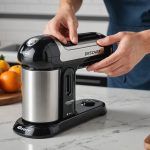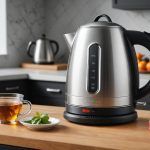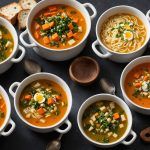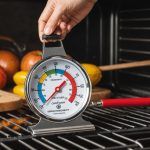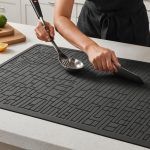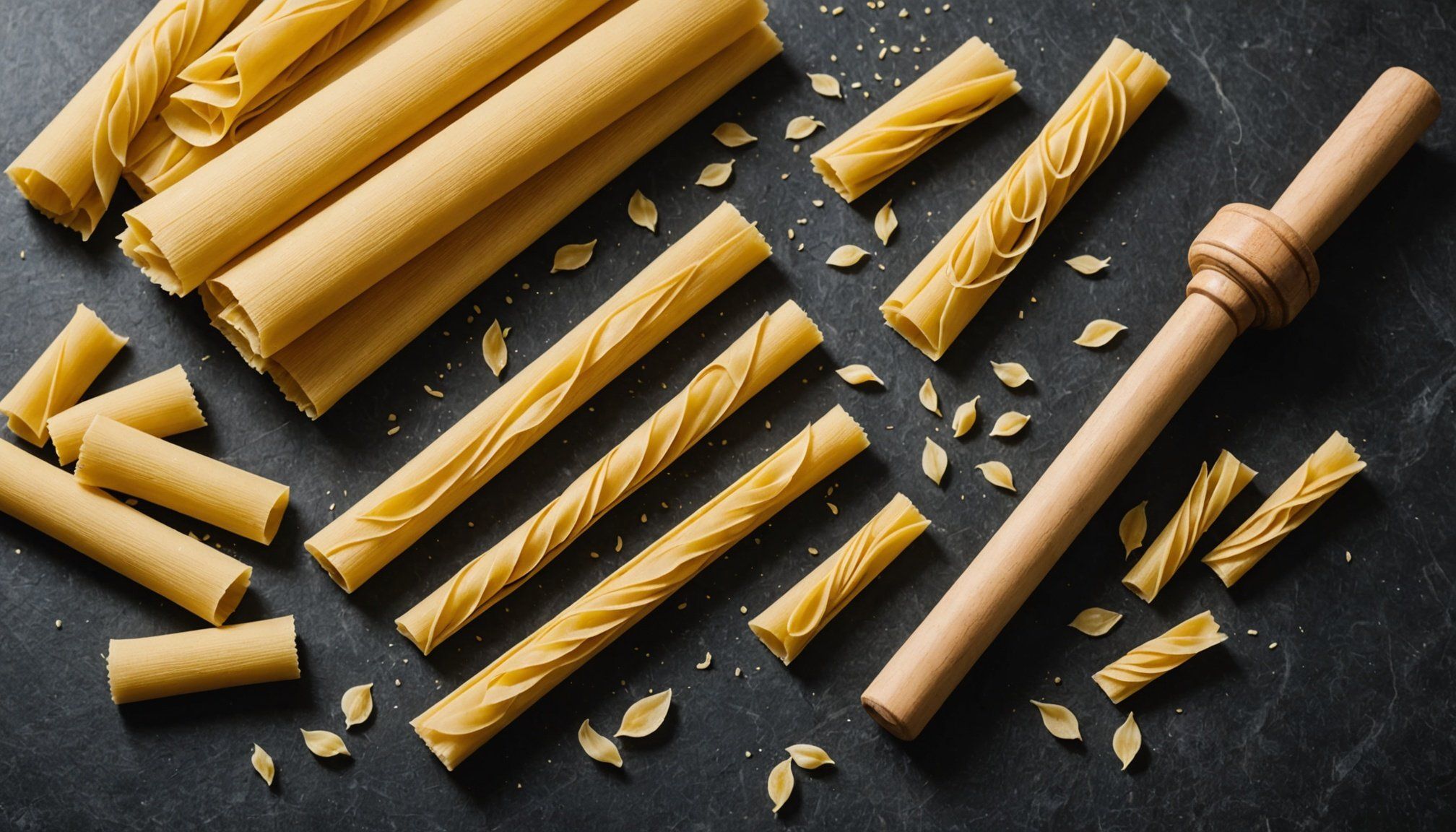Essential Tools for Homemade Pasta
Crafting delicious homemade pasta begins with the right pasta-making tools. These essential tools facilitate the process and enhance your kitchen experience, regardless of whether you’re a novice or a seasoned chef. Let’s delve into the must-haves of pasta-making kitchen equipment.
First on the list is a pasta machine, pivotal for rolling dough into thin, even sheets. Manual versions are budget-friendly, while electric ones cater to a more streamlined, professional approach. Next, a good quality rolling pin comes in handy for additional control over dough thickness, especially for those who prefer a more tactile process.
Also to discover : Master the art of pizza: key features of a pizza stone for crispy crusts in your home oven
A dough scraper is invaluable for cutting pasta shapes and preventing dough from sticking to the work surface. For shaping orecchiette or cavatelli, a gnocchi board or ridged knife offers the perfect touch. Lastly, a sturdy colander is indispensable for straining your pasta once cooked.
Choosing between budget-friendly and professional-grade equipment depends on your commitment to pasta-making and your kitchen space. Manual tools suffice for most amateurs, but enthusiasts aiming for finesse might find investment in advanced equipment worthwhile. By equipping yourself with these tools, you can explore and perfect your pasta-making adventures confidently.
Also read : Essential oven thermometers for accurate cooking: achieve flawless temperatures every time!
Techniques for Making Pasta from Scratch
Creating homemade pasta involves mastering a few key pasta techniques to ensure success. The foundation is the dough preparation, which begins by mixing flour and eggs. Achieve the perfect consistency by forming a smooth, elastic mass. Is the dough difficult to work with? If yes, the likely causes could be inaccurate measurements or insufficient kneading.
Kneading the dough is essential, as it develops gluten and adds texture. Press the heel of your hand into the dough and push forward. Then fold it over and repeat. This process typically takes about 10 minutes. After kneading, allowing the dough to rest is vital. Resting permits the gluten to relax, easing the shaping of pasta.
Shaping techniques can vary with different types of pasta. For tagliatelle, use a sharp knife to slice the rolled dough into strips. For filled pasta, such as ravioli, place filling on rolled sheets and seal the edges. These techniques ensure consistent pasta quality.
Don’t forget to dry pasta before cooking, especially for long storage. Proper drying prevents stickiness during cooking and maintains the ideal texture in your culinary creations. With practice, these methods will transform your homemade pasta into delectable successes.
Various Pasta Types and Their Preparation
Exploring types of pasta opens up a world of culinary possibilities, each with its unique preparation method. First, let’s distinguish between fresh and dried pasta. Fresh pasta, often made with eggs, requires quick cooking to maintain its silky texture. In contrast, dried pasta, typically made from semolina and water, is more robust and shelf-stable.
Filled pasta, such as ravioli or tortellini, offers room for creativity. Prepare these by filling fresh pasta sheets with mixtures like ricotta and herbs. Seal edges securely to ensure contents remain intact during cooking. Specialty shapes, like fusilli or penne, add visual flair and enhance sauce adhesion.
When delving into unique pasta recipes, consider trying garganelli, a ridged tubular pasta perfect for rich, chunky sauces. Preparing this involves shaping flat squares into cylinders using a gnocchi board to create texture.
Achieving the desired texture and flavour is crucial. Fresh pasta benefits from a shorter boiling time in salted water, preventing it from turning gummy. Dried pasta requires more time to reach al dente perfection. The key is tasting as you go, aiming for firmness with a slight bite to elevate your dish to a culinary masterpiece.
Common Pitfalls and How to Avoid Them
Embarking on the journey to master homemade pasta can be rewarding, yet it’s riddled with potential obstacles. Common pasta mistakes can easily derail your efforts. One major issue is dough that’s too sticky or dry. This often stems from incorrect measurements or humidity levels. The solution? Adjust flour or moisture gradually, aiming for a smooth, pliable dough.
When tackling homemade pasta techniques, improper kneading is a frequent pitfall. Without sufficient kneading, gluten development suffers, affecting texture. Aim for a thorough 10-minute session, pressing the dough with the heel of your hand, ensuring suppleness.
Another typical issue comes during cooking. Overcooking fresh pasta is a rookie error, leading to mushy results. Remember, freshly made pasta requires significantly less time than dried varieties. Timing is crucial; taste regularly to achieve that perfect al dente firmness.
Storage mishaps can spoil your efforts, too. Ensure dried pasta is completely air-cured before storing to prevent spoilage. Insights from expert pasta makers highlight the importance of patience and practice. As you build your skills, these insights and troubleshooting tips will ensure your pasta-making adventures are both successful and satisfying.
Expert Insights and Tips
Unearthing the secrets of pasta creation with guidance from pasta expert tips can greatly elevate your kitchens’ pasta experiences. Professional advice often includes revisiting tried-and-tested methods and unique enhancements that even skilled home cooks can integrate. For instance, renowned pasta chefs often recommend starting with high-quality flour as a non-negotiable base for achieving that silky pasta consistency. The precise choice of flour influences dough elasticity and flavour depth.
Pasta making secrets from seasoned chefs oftentimes focus on perfecting texture through hydration levels. Compelling insights include allowing the dough enough resting time post-kneading. This step is crucial, as it lets the gluten fully develop and strengthens the dough, making it easier to work with in the long haul.
Moreover, experienced cooks occasionally share creative variations on traditional recipes. Pairing unconventional ingredients like beetroot or squid ink can introduce vibrant colours and enriched flavours. An almost playful embrace of new flavours keeps the artistry alive, offering pasta aficionados a space for constant experimentation.
Finally, unique techniques, such as using a pasta pot with a built-in strainer, streamline cooking processes, saving both time and effort. Embracing these insights and nuances will undoubtedly enhance and diversify your homemade pasta repertoire.
Frequently Asked Questions about Homemade Pasta
Homemade pasta often sparks curiosity and questions. Here, we provide answers to common pasta FAQs to enhance your culinary journey.
Why is my pasta dough inconsistent?
A key concern with homemade pasta is dough consistency. If your dough feels too sticky or dry, inaccurate measurements might be to blame. Begin by ensuring precise flour and liquid measurements. If adjustments are needed, gradually add flour or water until a smooth, elastic structure forms.
How should homemade pasta be stored?
Storage is crucial for maintaining quality. Fresh pasta can be refrigerated for up to two days, ensuring it’s covered to avoid drying. For longer shelf-life, dry pasta completely before storing in airtight containers at room temperature. This prevents spoilage and preserves texture.
How do I prevent pasta from sticking when cooked?
Sticky pasta is a common concern but easily mitigated. Add salt and a splash of olive oil to the boiling water before adding pasta. Stirring occasionally ensures separation. Additionally, pairing pasta with a compatible sauce enhances flavour without clumping.
These insights can address practical common pasta concerns, making your homemade pasta experience more enjoyable and successful.

